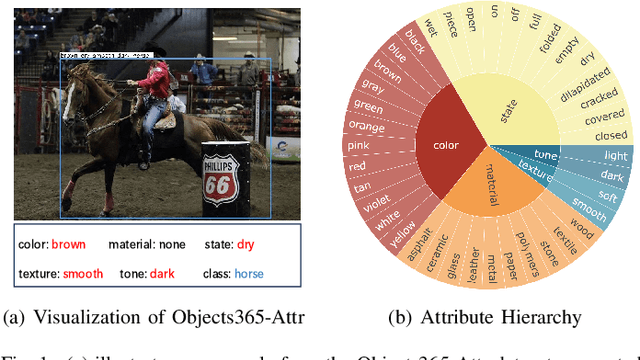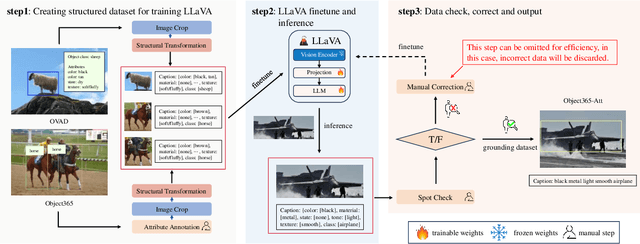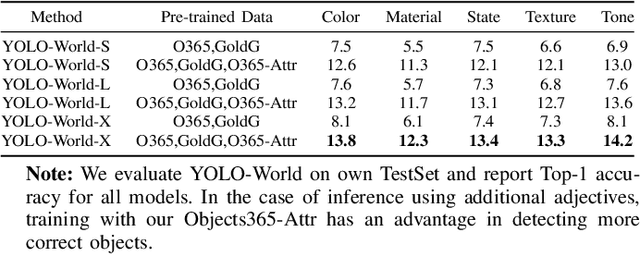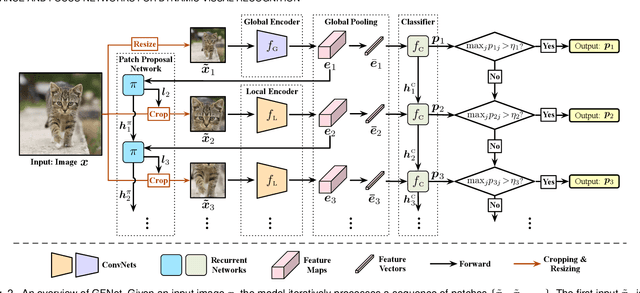Pengfei Qi
An Attribute-Enriched Dataset and Auto-Annotated Pipeline for Open Detection
Sep 10, 2024



Abstract:Detecting objects of interest through language often presents challenges, particularly with objects that are uncommon or complex to describe, due to perceptual discrepancies between automated models and human annotators. These challenges highlight the need for comprehensive datasets that go beyond standard object labels by incorporating detailed attribute descriptions. To address this need, we introduce the Objects365-Attr dataset, an extension of the existing Objects365 dataset, distinguished by its attribute annotations. This dataset reduces inconsistencies in object detection by integrating a broad spectrum of attributes, including color, material, state, texture and tone. It contains an extensive collection of 5.6M object-level attribute descriptions, meticulously annotated across 1.4M bounding boxes. Additionally, to validate the dataset's effectiveness, we conduct a rigorous evaluation of YOLO-World at different scales, measuring their detection performance and demonstrating the dataset's contribution to advancing object detection.
Glance and Focus Networks for Dynamic Visual Recognition
Jan 09, 2022



Abstract:Spatial redundancy widely exists in visual recognition tasks, i.e., discriminative features in an image or video frame usually correspond to only a subset of pixels, while the remaining regions are irrelevant to the task at hand. Therefore, static models which process all the pixels with an equal amount of computation result in considerable redundancy in terms of time and space consumption. In this paper, we formulate the image recognition problem as a sequential coarse-to-fine feature learning process, mimicking the human visual system. Specifically, the proposed Glance and Focus Network (GFNet) first extracts a quick global representation of the input image at a low resolution scale, and then strategically attends to a series of salient (small) regions to learn finer features. The sequential process naturally facilitates adaptive inference at test time, as it can be terminated once the model is sufficiently confident about its prediction, avoiding further redundant computation. It is worth noting that the problem of locating discriminant regions in our model is formulated as a reinforcement learning task, thus requiring no additional manual annotations other than classification labels. GFNet is general and flexible as it is compatible with any off-the-shelf backbone models (such as MobileNets, EfficientNets and TSM), which can be conveniently deployed as the feature extractor. Extensive experiments on a variety of image classification and video recognition tasks and with various backbone models demonstrate the remarkable efficiency of our method. For example, it reduces the average latency of the highly efficient MobileNet-V3 on an iPhone XS Max by 1.3x without sacrificing accuracy. Code and pre-trained models are available at https://github.com/blackfeather-wang/GFNet-Pytorch.
 Add to Chrome
Add to Chrome Add to Firefox
Add to Firefox Add to Edge
Add to Edge